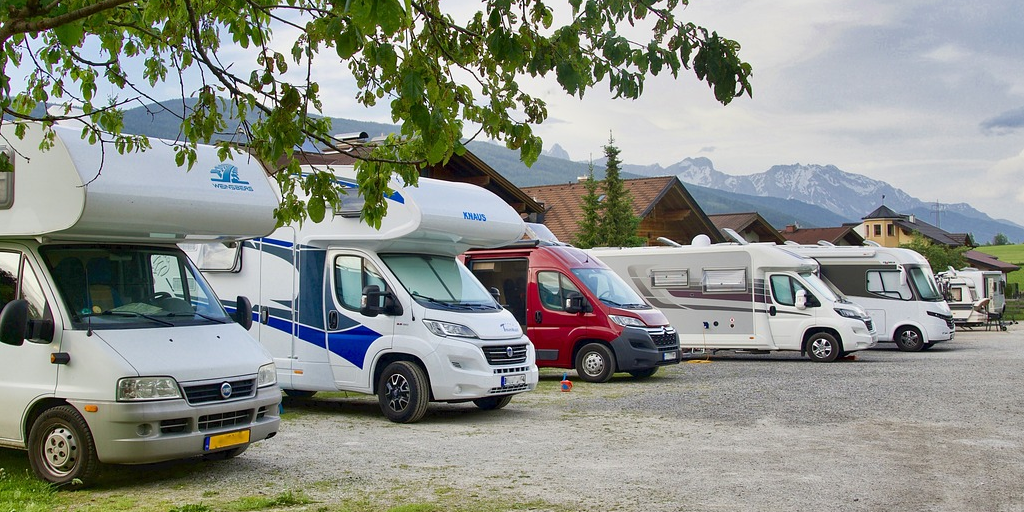
Tips to Maximize Performance and Extend RV Battery Life
Share
Recreational vehicles (RVs) are a gateway to adventure and freedom, providing a mobile home that can travel off-grid for extended periods. At the heart of every RV lies its battery system, which powers everything from essential appliances and lighting to entertainment systems and charging ports. For RV owners, understanding how to care for and manage batteries is crucial. In this comprehensive guide, we’ll share expert RV battery tips that cover everything from proper maintenance and charging techniques to storage, troubleshooting, and safety practices. By following these guidelines, you can maximize battery performance, extend lifespan, and enjoy worry-free travel.
1. Understanding Your RV Battery System
Before diving into maintenance tips and best practices, it’s important to understand the basics of your RV battery system. RVs generally rely on deep-cycle batteries, which are designed to provide a steady amount of current over a long period and then be recharged repeatedly. There are several types of deep-cycle batteries commonly used in RVs:
- Flooded Lead-Acid Batteries: Traditional batteries that require regular water maintenance. They are reliable and cost-effective but need proper ventilation and care.
- Absorbed Glass Mat (AGM) Batteries: These sealed batteries offer better vibration resistance and require less maintenance. They also handle deep discharges more efficiently.
- Lithium-Ion Batteries: Although more expensive, these batteries provide longer lifespans, are lighter, and can be discharged deeper without damage.
Knowing which type of battery you have is key to adopting the right maintenance and charging practices.
2. Proper Charging Techniques
Charging is one of the most critical aspects of RV battery care. Improper charging can lead to sulfation, reduced capacity, or even permanent damage.
Use the Correct Charger
- Match Your Battery Type: Always use a charger that is compatible with your specific battery type. For example, AGM and lithium-ion batteries have different charging profiles than traditional flooded batteries.
- Smart Chargers: Consider investing in a smart charger with multi-stage charging capabilities. These chargers adjust the charging process based on battery condition, ensuring a full yet safe charge cycle.
Avoid Overcharging and Deep Discharging
- Prevent Overcharging: Overcharging can cause excess heat buildup, damage the battery, and reduce lifespan. A smart charger will automatically switch to a maintenance or float charge mode once the battery reaches full capacity.
- Limit Deep Discharges: Deep discharging, where the battery is drained excessively, can shorten battery life. Aim to keep your batteries above 50% charge when possible and use a battery monitor to track discharge levels.
Temperature Considerations
- Ambient Temperature: Batteries work best at moderate temperatures. Extreme heat or cold can impair performance. If you’re camping in very hot or cold conditions, ensure your battery compartment is well insulated or ventilated.
- Temperature-Controlled Charging: Some chargers come with built-in temperature sensors. These systems adjust the charging rate if the battery becomes too warm, thus protecting it from damage.
3. Regular Maintenance and Inspection
Routine maintenance can prevent many common battery issues. Even with the best chargers and care, batteries can deteriorate without proper upkeep.
Visual Inspections
- Check for Corrosion: Regularly inspect battery terminals and cables for corrosion or loose connections. Clean terminals with a solution of baking soda and water if you notice any buildup.
- Examine Battery Case: Look for cracks, bulges, or any signs of physical damage. A compromised battery case can lead to leaks or short circuits.
Watering Flooded Batteries
- Maintain Water Levels: For flooded lead-acid batteries, check the electrolyte level periodically. Only use distilled water to top off cells and avoid overfilling.
- Equalization Charge: Perform an equalization charge (if recommended by your battery manufacturer) to balance the charge among cells and prevent stratification.
Cleaning and Tightening Connections
- Cable Check: Ensure that all connections are tight and free from corrosion. Loose or dirty cables can lead to poor conductivity and reduced battery performance.
- Terminal Protection: Consider using terminal protectors or sprays that help prevent corrosion and maintain a secure connection.
4. Battery Monitoring and Data Management
Modern technology offers RV owners the benefit of real-time battery monitoring. A battery monitoring system can provide invaluable data about the state of your battery bank.
Why Monitor Your Batteries?
- State of Charge (SoC): Knowing the current charge level helps prevent over-discharging and overcharging.
- Voltage and Current Levels: Monitoring voltage and current can alert you to abnormal fluctuations that might indicate a failing cell or a connection issue.
- Temperature Alerts: Some systems also track battery temperature, which is crucial for preventing overheating in hot climates or under heavy load.
Tools for Monitoring
- Battery Monitors: Devices like the Victron BMV series or similar products offer real-time data and historical logs.
- Mobile Apps: Many modern battery monitors integrate with smartphone apps, allowing you to keep an eye on your battery performance from anywhere.
- DIY Monitoring Systems: For tech-savvy RVers, there are options to build custom monitoring systems using microcontrollers like Arduino or Raspberry Pi.
5. Energy Efficiency and Usage Optimization
Managing your energy consumption can have a significant impact on battery longevity. Here are some tips to optimize energy use in your RV:
Reduce Load When Possible
- LED Lighting: Replace incandescent bulbs with energy-efficient LED lights. LEDs use far less power and produce less heat.
- Efficient Appliances: Choose energy-efficient appliances for your RV. When shopping for RV components, look for those with high energy-efficiency ratings.
- Limit High-Power Devices: Be mindful of using devices that draw a lot of power simultaneously. Spread out the use of high-energy devices throughout the day.
Energy-Saving Habits
- Plan Your Trips: Consider your energy needs before heading out. Plan your route and stops where you can recharge or run your generator if needed.
- Solar Panels: If you’re often off-grid, solar panels can provide a renewable source of power to keep your batteries charged. Ensure your solar setup is properly sized for your energy requirements.
- Power Management Systems: Use power management systems that automatically adjust loads based on battery levels. This can prevent deep discharges and extend battery life.
6. Storage Tips for Long-Term Battery Health
When your RV is not in use for extended periods, proper battery storage is essential to prevent degradation.
Preparing Batteries for Storage
- Fully Charge Before Storage: Batteries should be fully charged before being stored to prevent freezing (in cold climates) and reduce sulfation.
- Disconnect and Isolate: Disconnect the battery from the RV’s electrical system if it’s going to be in storage for an extended period. This prevents parasitic drains.
- Clean and Dry: Ensure that batteries are clean and dry. Remove any corrosion from terminals and apply a protective coating if necessary.
Storage Environment
- Temperature Control: Store batteries in a cool, dry place. Extreme temperatures can accelerate battery degradation.
- Regular Checks: Even in storage, periodically check the batteries’ state of charge. Recharge if the voltage drops below the recommended level.
- Use a Trickle Charger: For long-term storage, consider using a smart trickle charger. This device will keep the battery at an optimal charge level without the risk of overcharging.
Adopt A Reliable Battery Management System
A reliable battery management system such as leagend COULOMB METER SOLUTION can help RV owners monitor the current, internal resistance, SoC, SoH and other battery parameter in real time, they can monitor and master their RV batteries in real time.
"By integrating a robust battery monitoring system, RV owners can transform their travel experience, ensuring safety, longevity, and optimal performance from one of the most critical components of their mobile lifestyle. Investing in such a system is not just about preventing downtime—it’s about empowering you to explore, adventure, and live life on your terms, wherever the road may lead."- leagend SOLUTIONS
7. Troubleshooting Common Battery Issues
Despite the best efforts, you may encounter battery issues. Knowing how to troubleshoot can save you time and money.
Identifying Common Problems
- Sulfation: Occurs when lead sulfate crystals build up on battery plates due to prolonged discharge. This can be mitigated by keeping batteries charged and occasionally performing an equalization charge.
- Corrosion: Corroded terminals or connections can result in poor performance. Regular cleaning is the best prevention.
- Loss of Capacity: Over time, batteries naturally lose capacity. If you notice a significant drop in performance, it might be time to consider a replacement.
Steps to Troubleshoot
- Measure Voltage and Current: Use a multimeter or battery monitor to check for irregular voltage or current levels.
- Inspect Connections: Look for loose or corroded connections. Tighten or clean as needed.
- Check for Physical Damage: Examine the battery for any signs of bulging, leaks, or cracks. Damaged batteries should be replaced immediately.
- Consult a Professional: If troubleshooting doesn’t resolve the issue, it may be time to consult with a professional technician who specializes in RV electrical systems.
8. Upgrading Your RV Battery System
As technology advances, upgrading your RV battery system can offer improved performance and additional features.
Considerations for Upgrading
- Battery Type: Switching to newer battery technologies like lithium-ion can provide longer life, lighter weight, and deeper discharge capabilities.
- Integrated Monitoring: Modern battery systems often come with integrated monitoring systems, simplifying maintenance and providing more detailed data.
- Cost vs. Benefits: Although upgrading can be expensive, the long-term benefits of increased efficiency, reliability, and reduced maintenance costs often justify the investment.
Steps for a Successful Upgrade
- Evaluate Your Energy Needs: Before upgrading, assess your current energy consumption and future requirements. This ensures you select the right capacity and type of battery.
- Professional Installation: Especially when switching battery types, professional installation is recommended to ensure compatibility with your RV’s electrical system.
- Future-Proofing: Choose systems that allow for scalability and integration with renewable energy sources like solar panels. This future-proofs your RV against evolving energy needs and technologies.
9. Safety First: Handling and Disposal
Batteries can be dangerous if mishandled. Always prioritize safety when working with your RV battery system.
Handling Batteries
- Wear Protective Gear: When handling batteries, always wear gloves and eye protection to prevent injury from acid spills or corrosion.
- Ventilation: Ensure that you work in a well-ventilated area. Batteries can emit harmful gases during charging.
- Avoid Short Circuits: Keep metal tools away from battery terminals to prevent accidental short circuits.
Disposal and Recycling
- Proper Disposal: When batteries reach the end of their lifespan, dispose of them responsibly. Many auto parts stores and recycling centers accept old batteries.
- Follow Regulations: Adhere to local regulations regarding hazardous waste disposal to minimize environmental impact.
10. Final Thoughts
Your RV battery system is the lifeblood of your mobile adventures. Whether you’re a weekend warrior or a full-time RVer, investing time and effort into proper battery care pays off in reliability, safety, and longevity. By following these tips—ranging from proper charging techniques and regular maintenance to energy optimization and safe storage—you can enjoy a more dependable power supply and reduce unexpected interruptions on the road.
The key takeaways include:
- Understanding Battery Types: Know whether you have flooded, AGM, or lithium-ion batteries and tailor your care accordingly.
- Adopting Smart Charging Practices: Use the right charger and avoid overcharging or deep discharging.
- Regular Monitoring: Employ battery monitors and mobile apps to keep a close eye on battery health.
- Maintenance and Troubleshooting: Regular inspections, cleaning, and addressing issues early can extend battery life.
- Safe Handling and Upgrading: Always prioritize safety when handling batteries and consider modern upgrades to keep up with technology.
With the growing popularity of off-grid travel and increasing reliance on RV power systems, staying informed about battery care is more important than ever. Whether you’re planning a long cross-country road trip or simply enjoying the freedom of a mobile lifestyle, a well-maintained battery system is essential for a smooth, worry-free experience.
By applying these comprehensive RV battery tips, you ensure that your investment remains robust, efficient, and ready to support your journey through life’s many adventures. Enjoy the road ahead with confidence, knowing your RV’s battery system is optimized for peak performance, safe operation, and long-lasting power.
Embrace the best practices outlined in this guide and transform your RV experience with a proactive approach to battery care. With proper management, your battery system won’t just power your RV—it will power your freedom to explore, create memories, and experience the open road like never before.
By incorporating these RV battery tips into your routine, you’re taking a proactive step toward a more sustainable, efficient, and safe mobile lifestyle. Whether you’re a novice or a seasoned RVer, the key to maximizing your adventures lies in the health of your battery system. Stay informed, stay safe, and keep the power flowing as you explore the endless possibilities on the road.







